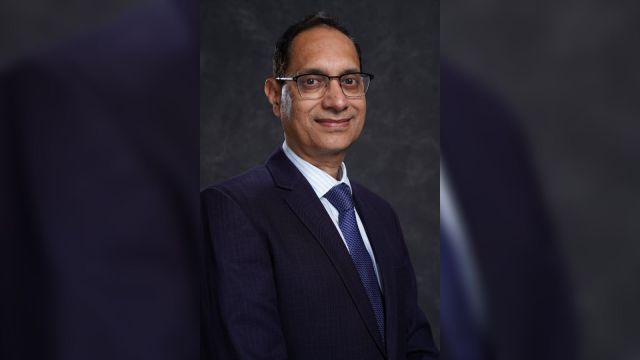The government is being fiscally prudent and maintaining balance through its fiscal policy, which is supportive of the monetary policy objective to keep inflation under control, according to Finance Secretary TUHIN KANTA PANDEY. In an interview with AANCHAL MAGAZINE and SUKALP SHARMA, he said that growth needs to be pushed in a “non-inflationary way”, while keeping fiscal deficit and debt under control. Amid risks emerging for India from global tariff wars, Pandey, who is also the Revenue Secretary, said that import duties have been rationalised and simplified, and the government hopes “to go even further” on that path. On income tax relief, Pandey said that the government does not want to be “prescriptive” about what taxpayers decide to do with the extra money in hand—spend, invest, or save.

Changes in income tax rates are being seen as a boost for consumption. How much consumption growth do you foresee?
Now, this is all taxpayers’ money. It was supposed to be given to the government, which would have made a choice on how to deploy it. What we are saying is that we will give the money back to you… This is a structural reform that we have done and it is going to stay for some time, as we can’t just keep on changing the slab structure again and again.
You have three choices—you can choose to consume, you can choose to save, or you can choose to directly invest. Because you as a household are also an investor, which is important. We always say that either the corporates can invest or the government can invest. Households also invest and this is something which is not normally highlighted…It (investments by households) could be very significant and dispersed.
When the money comes back to the government, it can gravitate towards only a few sectors or industries…When it goes to the people, it will be deployed in diverse areas. The government doesn’t spend money on dining out, for example…So, people can stimulate a lot more sectors than (what would happen) otherwise through government investment.
But suppose you don’t choose to spend (or invest)…banks are looking for savers because they have to give credit…and deposits were a concern. In the present state of our economy, either of the three choices will work. Nothing is lost so far as the economy is concerned by transferring this money back to you.
So, the government is not being prescriptive about what people should do with their tax savings?
Story continues below this ad
We’re not being prescriptive…we expect it to be a combination of a consumption and investment multiplier. It will be, in my opinion, more broad-based. Autonomously, sometimes, things work much better than when you are trying to control them. So, my take would be that it (tax relief) may be beneficial overall.
Some people are saying that we should have pushed expenditure more, but expenditure has to be grounded. In my opinion, whether you raise expenditure by Rs 1 lakh crore or give it to people as tax relief, the benefits to the economy would be there…And a particular class also had angst that it was paying a lot in taxes but felt that it was not getting much in return. That has also been addressed. The government must respond to (such concerns from taxpayers).
As you said, the income tax relief measures will likely have an impact on various sectors of the economy. Does it also set the stage for a rate cut by the Reserve Bank of India?
Rate cut is an independent decision. All we are doing is bringing the fiscal deficit under control, as we have promised…we are following the (fiscal glide) path and following it very well. We had said that we will bring the deficit to 4.9 per cent (of the GDP in 2024-25), but we have managed 4.8. Then we had said that it would be 4.5 per cent (for next fiscal), but now we are projecting 4.4 per cent…We are maintaining the balance on the fiscal side. Through fiscal policy, we are actually supportive of monetary policy’s goal of inflation control as the Government and RBI are in sync on that…In the Budget, there are many supply-side measures. RBI would say that it can look at only the demand side, so we are looking at the supply side.
Story continues below this ad
Does the income tax relief take into account that the 8th Pay Commission is imminent and would push many beyond the Rs 12-lakh tax-free threshold?
Natural progression in income will always be there, and we must promote people’s income. Just because we have made a (tax-free threshold) slab, does not mean that people’s income should not rise beyond that. But now even with a rise in pay, people will pay tax at reduced rates due to slab rate reductions.
Obviously, if more money comes into the economy, tax revenue would go up, and should go up as our expenditure will also rise. We have to do that balancing as well. The point is that we need to push growth in a non-inflationary way while keeping our fiscal deficit and debt under control.
One of the biggest headwinds is the tariff war playing out on the global stage. The changes in basic customs duty (BCD) have tilted the revenue share more towards the Centre than states with a higher share of Agriculture Infrastructure and Development Cess (AIDC) on a number of items…
Story continues below this ad
We don’t really look at Customs as a source of revenue… Economy is growing at 10 per cent, and Customs is growing at 2.1 per cent. It means we are on a path of reduction (in customs duty). We have to look at Customs as a broader measure. We are showing the world that the high (import tariff) rates have gone…BCD is a more permanent structure, while AIDC is temporary. In the future, we can reduce AIDC or remove it…it is the moving part. BCD schedule which is more permanent and that is what is accounted for by the rest of the world in calculating the average tariff rate. Now, the average tariff rate on industrial goods has come down to 10.6 per cent on industrial goods, which used to be more than 13 per cent earlier. So, that is the messaging to the world and it is also a signal to our industry…We have to be competitive.
Does that mean that AIDC is a temporary component, and will progressively come down with time?
In some cases, we are temporarily keeping it (effective rate) stable…but with a clear thought that this (import duty) is to be brought down eventually. Balancing of interests is done keeping consumers and producers in mind. We have to see all these things in Customs. Had we just reduced BCD without bringing in AIDC, it would have been a bit too much for some sectors where we want to push local manufacturing.
We now have a simpler (import duty) structure and we hope we are able to stick to it, and go even further…We have taken out various tariff rates. The rates which remain are zero, 2.5 per cent, 5 per cent, 7.5 per cent and 10 per cent. These are beautiful rates. These promote competition and economic competitiveness in the industry. Because our industry should also be able to export. The (import duty) rates of 15 per cent and 20 per cent, which came later, were for some specific industries…to protect some industries PLI (Production-Linked Incentive) Schemes, we are retaining those. Eventually, we will remove these also. We have kept 70 per cent (rate), just to accommodate some of the items.

































